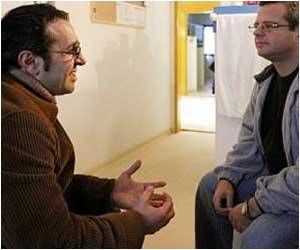
‘Although physicians said the same things to their black and white patients, researchers observed that nonverbal cues, such as eye contact, body positioning and touch could explain why many black patients perceive discrimination in the health care setting.’
Tweet it Now
Senior author Amber Barnato, associate professor of clinical and translational medicine in Pitt's School of Medicine, said, "Although we found that physicians said the same things to their black and white patients, communication is not just the spoken word. It also involves nonverbal cues, such as eye contact, body positioning and touch. Poor nonverbal communication - something the physician may not even be aware he or she is doing - could explain why many black patients perceive discrimination in the health care setting." Dr. Barnato and her team recruited 33 hospital-based attending emergency medicine physicians, hospitalists and intensivists from Allegheny County, Pa., and put them in realistic simulations where actors portrayed dying black and white patients accompanied by a family member. The actors portrayed comparable medical conditions - plummeting vital signs related to either metastatic gastric or pancreatic cancer - and read from matching scripts. The physicians were unaware of what the trial was testing.
The majority of the physicians were white men so the team could not derive any statistically significant conclusions about whether the physician's race impacted his or her actions.
Physicians were scored on a point system for both their verbal and nonverbal communication skills when interacting with the patient and family member. The physicians averaged 7% lower scores for their nonverbal interactions with the black patients than with the white patients.
"When explaining what was happening and what the next steps for care could be, with the white patients, the physicians were more likely to stand right at the patient's bedside and touch them in a sympathetic manner," said Dr. Barnato.
Advertisement
Dr. Barnato said, "When you survey people in the community about their feelings on end-of-life care, blacks are only slightly more likely than whites to say they want aggressive, life-sustaining measures when terminally ill. However, blacks are much more likely than whites to request such care when they are faced with making the decision in the hospital. Body language is a significant tool in building trust - or mistrust - and physicians need to ensure that their body language isn't contributing to that decision. To help black patients and their families feel welcome and encouraged to be partners in medical decision-making, it is critical that doctors be aware of their verbal and nonverbal communication and any unintentional biases."
Advertisement










